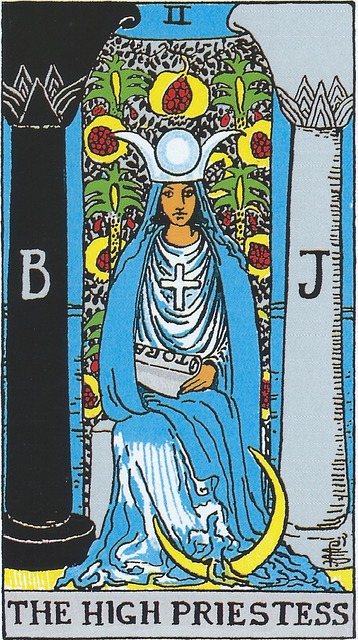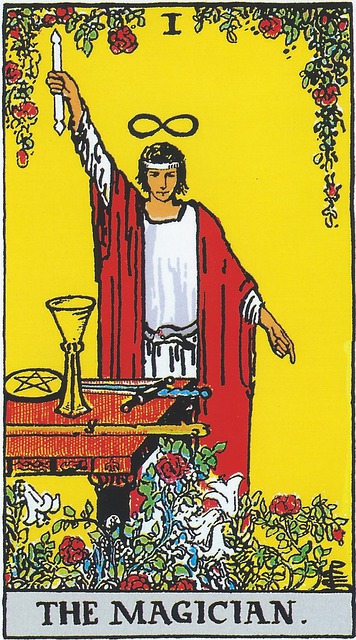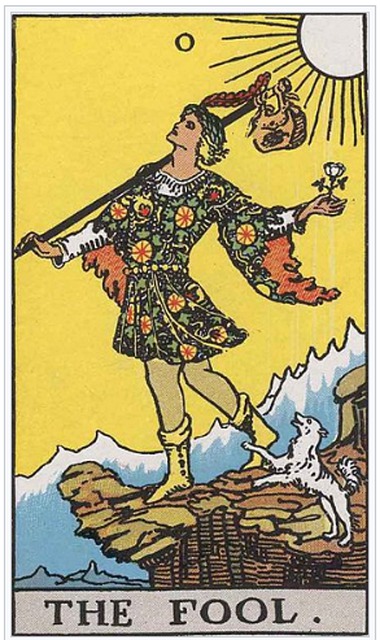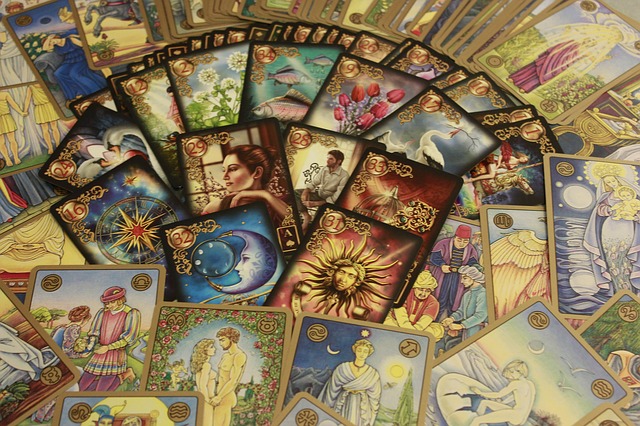
“To understand the immeasurable, the mind must be extraordinarily quiet, still.”
― Jiddu Krishnamurti
Overview AND MEANINGS of The High Priestess of the Major Arcana
The High Priestess is also known in varying tarot decks as The Priestess, Inner Voice, the Papess*, La Papessa, The Seer, and Veiled Isis. Smith-Waite assigns this card the number 2, which commonly represents togetherness and partnerships, but also, as in the case of this card, represents duality and polarity. The Light and the dark, yin and yang, male and female. That duality is what the High Priestess is here to reveal to you. She is here to remind you that only by taking time to be still, to go into meditation, to put yourself into a passive mode of receiving, can your truth and path be revealed.
Common Meanings
In most cases, when the High Priestess shows up, it is time for you to turn inwards, to be still, to take the time to meditate and tap into your intuition. If you are considering a change, this is the time when you need to really listen to what your inner voice is saying to you. Sometimes, the most profound changes in our lives come about through conscious inaction. This is very contrary to our Western Society normal, where we are so conditioned to analyze, to act, to MAKE THINGS HAPPEN. The high priestess invites you to listen, to allow. When you are living your truth, your whole life becomes a meditation. By taking the time to attune to your subconscious and become more self-aware, one can fully connect in rich, deep, and meaningful relationships with others. This is a time for you to explore your spiritual side; it is a time of heightened psychic ability and insight. It is a time to pay attention to areas in your life that may be out of balance, to be still and tune into your intuition. This is also a message to tap into the divine feminine, and, because the High Priestess is about duality, she also reminds us of the importance of balancing the masculine and feminine in your life, and to take the time to feel rather than just think. Taking time out for a period of passive withdrawal can allow things inside to awaken and strengthen. This time of introspection will bring about the slow reveal of profound wisdom. Trust the process!
The Many Faces of The High Priestess
Depending on where she is in the reading, (or in a reversed position if you read cards that way) The High Priestess showing up can also indicate secrets, gossip, ignoring gut or intuition. Often, she can be warning of hidden agendas – both yourself and those around you. This can be things left unsaid that you need to get off your chest, or concealed information that will be unveiled in the fullness of time. She also warns us of the dangers of too much introspection. Strong intuition couple with an inability to translate feelings to actions. Can be turning towards passion and involvement so much that you forget to listen to your inner voice.
The Journey of The High Priestess
It is ironic to call this a journey, because in so many ways, the High Priestess invites us to be still, to be quiet, to take that time for introspection and attune to the frequency of our inner voice. But for many, especially in our active society of always rushing here and there, it IS a journey. A journey of slowing down and taking that time and space that we all need, to tap into our intuition and find balance in our life.
Description
A female figure is seated on a throne, on her head a horned diadem representing the phases of the moon. She wears white robes with a cloak of blue, and a cross on her chest. In her lap, and partially concealed by her cloak, lies a partially unrolled scroll with the letters T O R A visible. Is this the Torah as many believe? On either side of her are two pillars, one black, one white. Behind her is a curtain, or veil, with pomegranates. At her feet is a crescent moon. Glimpses beyond the veil reveal the sea.
Themes of The High Priestess
- Dreams
- Mercy
- Darkness
- Intuition
- Introspection
- Stillness
- Psychic insights
- Spiritual Enlightenment
- Trust the universe
- Divine Feminine
- Wisdom gained from conscious passivity
The Number 2
The number two is feminine and, as such, presents duality: representing both grace and power; Yin/Yang, Male/female, Light/Dark, Action/Meditation. This number is representative of the dichotomy of true wisdom.
Elements of the high priestess Card and Associated Symbolism
- Black Column- Dark, water, earth, female, yin. Boaz – strength or swiftness
- White Column -Light, fire, air, yang, male. Jachin, “he establishes, “
- Both pillars reaching to heaven, connecting the subconscious.
- Crescent moon – subconscious and emotions, feminine energy, moon phases
- Pomegranates – abundance, divine feminine, fertility, Persephone
- Horned Moon headdress/diadem – Egyptian Goddess Hathor, divine knowledge/divine ruler, moon phases – waxing, full, waning
- Robes blue and white – blue for truth, white for purity and connection to subconscious
- Cross on chest- nod to female papacy
- Scroll in lap (tora visible – is this the torah?) (A.E. White – Tora = Greater Law)- rolled up and partially concealed, with some letters covered, hidden knowledge not yet available to us
- Veil – the other world/subconscious. Seeing beyond the obvious exterior.
Herbs for The High Priestess
- Sandalwood – Inner consciousness, meditation, spiritual practice, prayer, peace
- Peony – for becoming receptive, opening to your spiritual gifts and intuition
- Acacia- Psychic and spiritual enhancement
- Mugwort – introspection and intuition, gateway to inner-realms—unveiling who you are and what you need to understand. Promotes lucid dreaming.
- Blue Lotus – Enhance pineal gland function; enable longer states of deep meditation, reputed to activate the 3rd eye
Questions that the High Priestess asks us
- Have you ever ignored what your intuition was telling you, only to find out later that you were right all along? How can you honor your inner voice?
- It is common in modern society for women to need to adapt a more masculine energy to succeed in the business world, disconnecting us with our feminine side. How can you honor and bring the divine feminine into your life?
“Sometimes you need to sit lonely on the floor in a quiet room in order to hear your own voice and not let it drown in the noise of others.”
― Charlotte Eriksson,
That is The High Priestess. Wishing you a week in which you take the time to breathe, to listen to that still small voice, and to heed the wisdom that lies within.
As always, thank you for reading, and please leave comments or ask questions.
Join me next week for: The Empress




Recent Comments